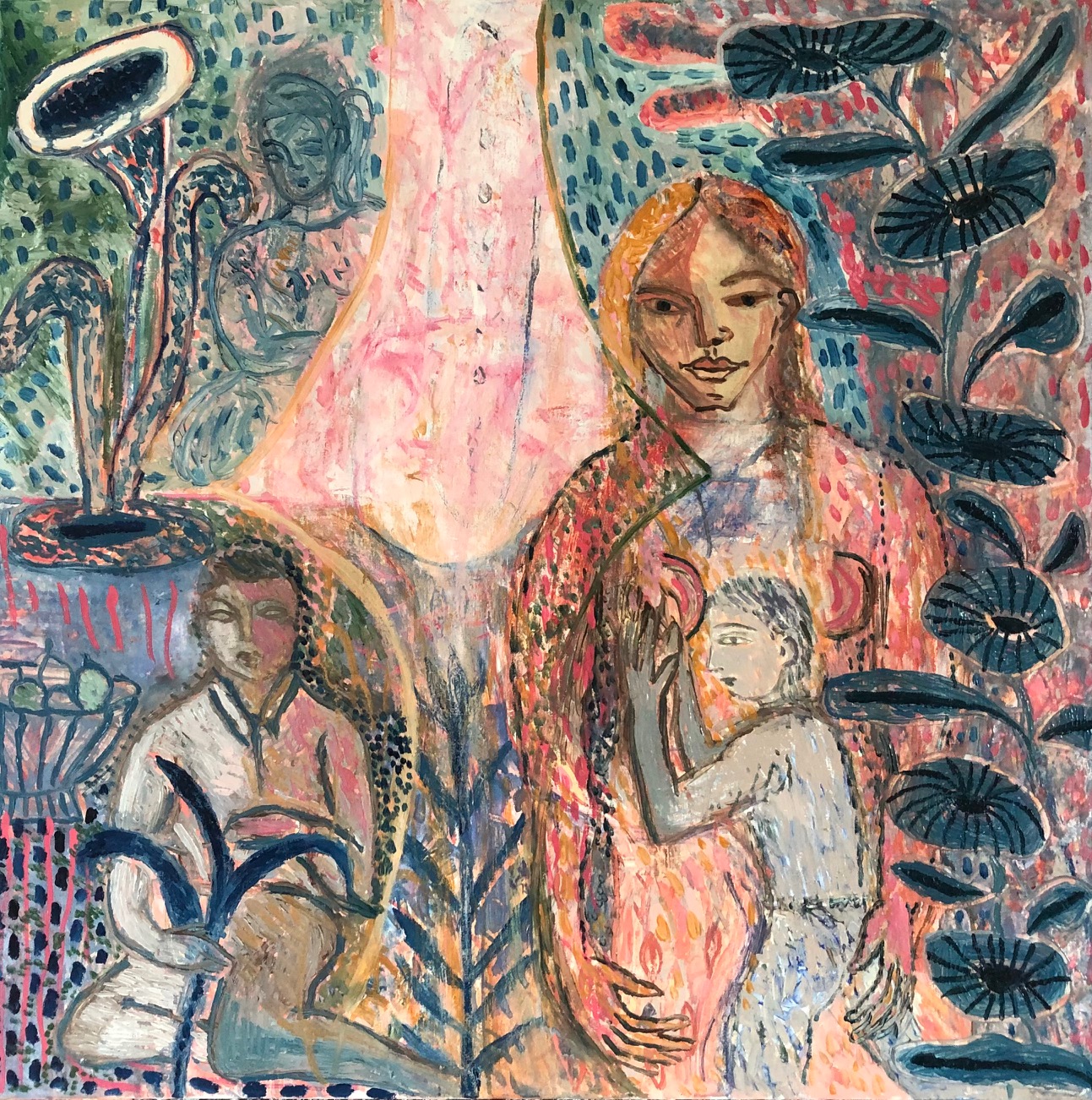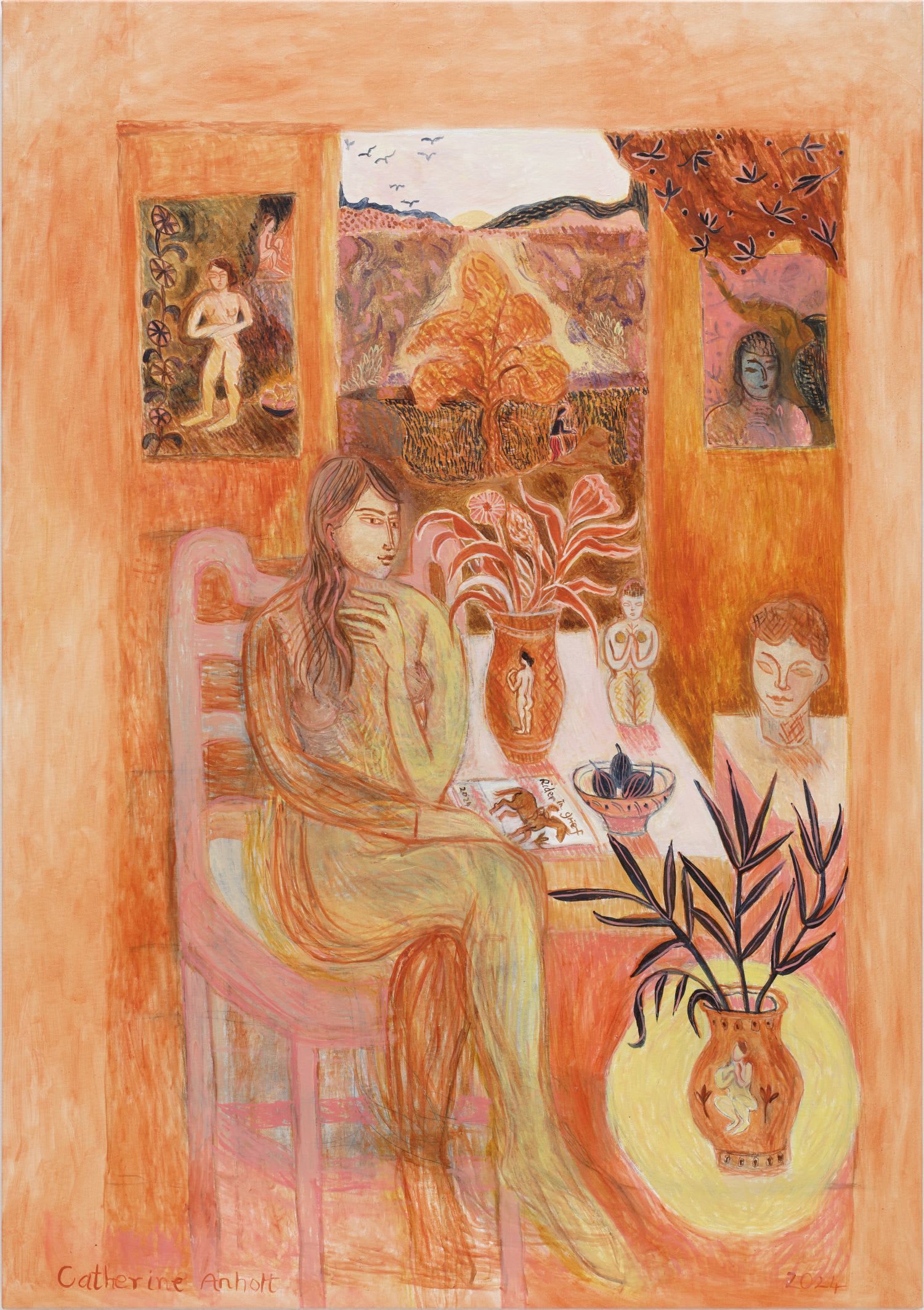Born in 1958, Catherine Anholt is one of eight siblings in an Irish Catholic family. Her DNA is 93% from Galway. Catherine has a First-Class Honour’s Degree from Falmouth School of Art in Cornwall, where she met her husband, the author and artist LaurenceAnholt. She also has a Master’s Degree from the Royal College of Art. When their three children were young, Catherine and Laurence Anholt wrote and illustrated more than 200 award winning children’s books, published in thirty languages.With studios overlooking the sea in Devon, UK, Catherine is known for luminous dreamlike paintings which have been exhibited around the world, most recently a solo show at Choi&Choi Gallery in Seoul. Her 2026 solo show will be at the Alice Folker Gallery in Copenhagen.Catherine describes her work as a celebration of being a woman, a partner, a mother and grandmother, and the dappled quality of this life.
I noticed you work with oil on linen, which gives your pieces such a timeless quality. What draws you to this medium, and how does it shape your creative process?
Working with oil paint on linen allows the image to evolve over many months. Oil painting has so many extraordinary properties, allowing the colours to develop layer upon layer, building in intensity. It is also a very forgiving medium, which can easily be scraped away, leaving a ‘ghost’ image to work on again. This process introduces an accidental element, which brings an exciting, unexpected quality to the work. A beautiful phrase from the Renaissance is, ‘I guide my hand, but a greater hand guides me’

Preparing For The Journey, 60 x 60 cm, Oil and Varnish on linen, 2021
Your painting Nothing is Lost feels so evocative. What’s the story behind it? Was there a specific moment or memory that inspired it?
Nothing is Lost. This painting was created shortly after the tragic death of our darling daughter Maddy from a brain tumour at just 35 years old. In my intense sorrow, I turned to creativity as my salvation; to try to make sense of what happened to such a beautiful human. The painting depicts her twin brother, Tom. The standing figure in the background is the universal mother. There is always a narrative element to my work, but I am happy for the viewer to interpret the image in their own way. The title, Nothing is Lost, is a reference to the enduring love that continues between a mother and daughter even after death.
Your piece Love Letters VI has such an intriguing title. What’s the connection between the title and the emotions you wanted to convey in the painting?
When our daughter died, our family was faced with the stark reality of impermanence. Maddy was a strong woman, a twin, a mother, an amazing daughter, a writer and performer, and an ambassador for Women's Aid. She was naturally funny. Always spilling over with laughter. But most of all, she was kind to everyone she met, regardless of status, gender, or race. My response has been a series of paintings entitled Love Letters, in which I record the mother and daughter relationship we enjoyed for 35 years on this earth, and imagine the world of light where she now dwells.
What’s the most challenging part of your creative process, and how do you push through it?
Perhaps everything worthwhile is challenging, and painting is no exception. That is its fascination. I would urge artists not to focus too much on what other people are doing, but to allow your own creativity to evolve from somewhere deep within. In this digital age, we are bombarded by images, so we need to be self-motivated and tenacious. Go into the studio, put on some quiet music, and dive into your inner world.
Your work feels deeply personal yet universal at the same time. How do you approach creating art that resonates with both your own experiences and those of your audience?
We inhabit a world in which we are faced with the daily horrors of war, climate change, discrimination, and individual tragedies. An artist’s role is to bring some meaning to it all. There are many universal themes in my work, but I tend to work intuitively rather than intellectually. I suppose I dream on canvas. Yes, it is only too easy to feel overwhelmed by negativity, but in the end, this world is astonishing and unique. In her diary, Anne Frank wrote, ‘I don't think of all the misery, but of the beauty that still remains.’ I hope in some modest way; each piece of work I create might reflect that.
Finally, if you could give one piece of advice to someone just starting out in the art world, what would it be?
Be yourself, don't be influenced by external pressures. Everyone is unique, don't be afraid to fail, just push through regardless. You only have one life and that can be fleeting and fragile, so appreciate it all - the good and the bad, the love and the pain. This life is dappled, but extraordinarily beautiful.

Always the Love,Oil on linen ,170 x 100 cm, 2024

